Qsan TrioNAS LX U300-P20-C424 review
Qsan unifies NAS and IP SAN storage services at a price SMBs will find very appealing
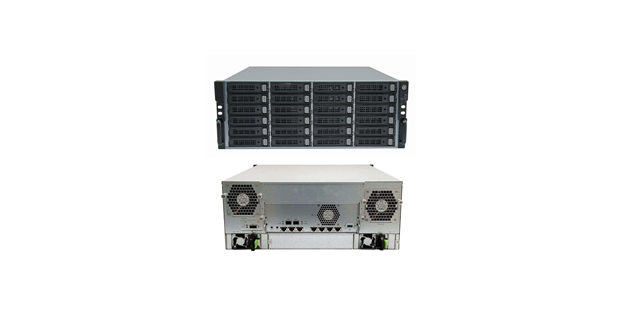
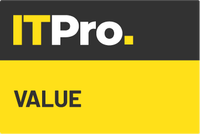
Big on capacity and performance, the TrioNAS LX is ideally suited to SMBs that want lots of network storage at a very affordable price
-
+
Top value; Excellent performance; Big expansion potential; SAS/SATA support; Integral snapshots included
-
-
Minimal hardware redundancy

Qsan has every storage angle covered as its latest TrioNAS LX arrays combine NAS, IP SAN and cloud backup services. The U300-P20-C424 on review has 10GbE too, yet it has a base price of just over 3,300.
The 4U chassis is plentifully equipped with 24 hot-swap drive bays which are certified for Hitachi's 8TB Helium drives. The single rear SAS expansion port allows you to max out at 192 drives using Qsan's J100 disk shelves so capacity can be pushed to an impressive 1.5PB.
Two controller choices are available with our system using a dual-core 2.4GHz Intel Core i3-4330TE. For heavier workloads, there's a quad-core 3.2GHz Intel Xeon E3-1225 v3 version and both come with 16GB of DDR3 expandable to 32GB.
Connection options abound. Our U300-P20 system not only has seven Gigabit Ethernet ports built-in, but has a dual 10GbE SFP+ card included too. The U300-P21 model has dual 10GBase-T, while the U300-F30 has two 16Gbps FC ports. If you want to keep initial costs low, you can opt for the base U300-P10 model which has just the basic seven Gigabit Ethernet ports and upgrade it later on.
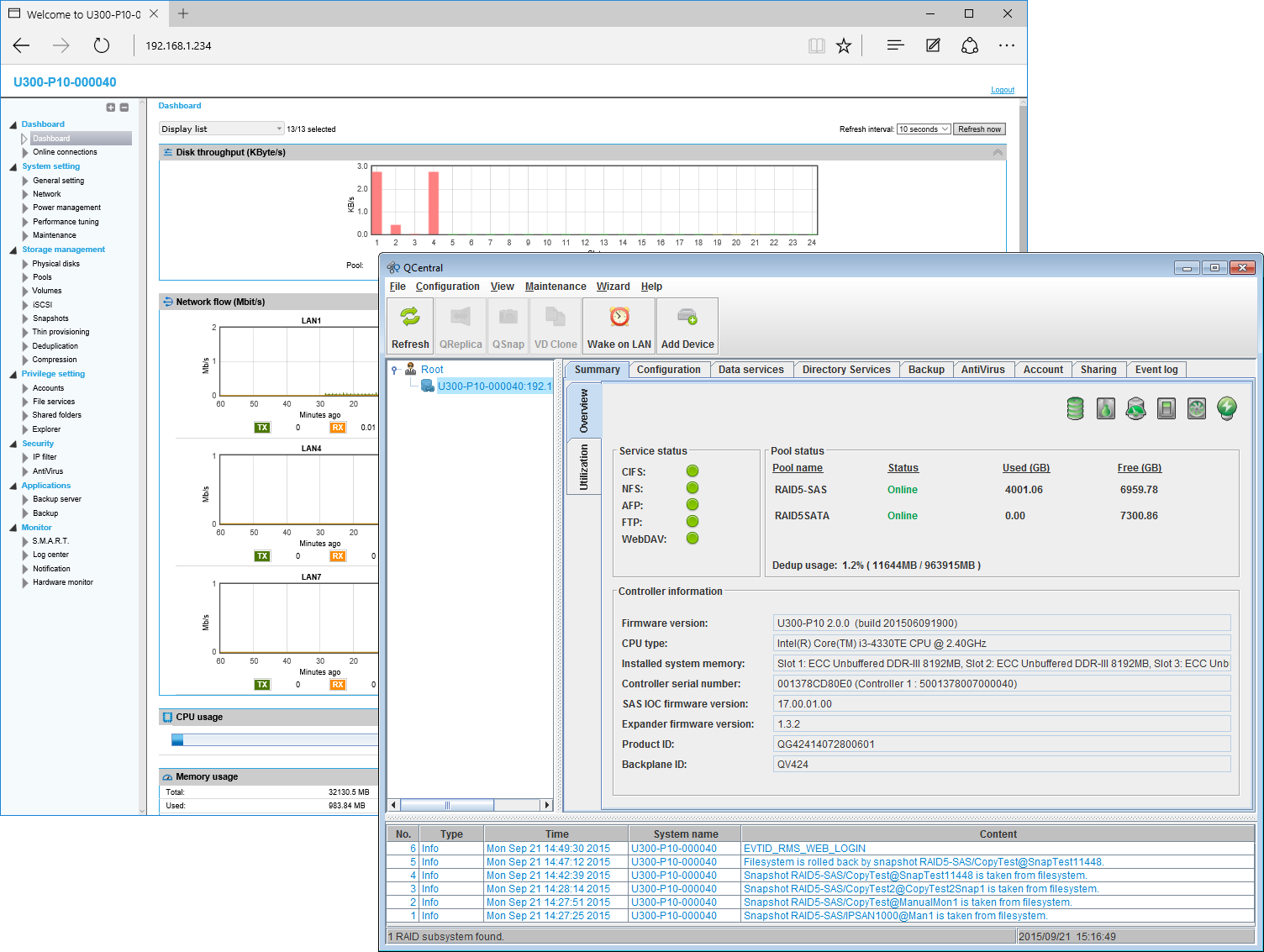
Web browser or Qsan QCentral the management choice is yours
Storage features
All TrioNAS LX arrays use ZFS so you get a choice selection of storage features which includes data deduplication, compression, thin provisioning and instant snapshots. The price also includes local and remote replication plus you can add SSDs as read or read/write caches.
Prior to testing, we upgraded our review system to Qsan's latest v2.0 firmware. Along with support for SMB 3.0 and AFP 3.4, this major update adds many new features including a revamped web management console, auto-rebuild on degraded arrays, Windows previous file version support and progress information on rsync and replication tasks.
Cloud backup makes up the third part of Qsan's storage services, but it only supports Amazon S3. We found it easy enough to create jobs to backup data to our AWS account, but we think Qsan should at the very least add an option for Amazon's cheaper Glacier service.
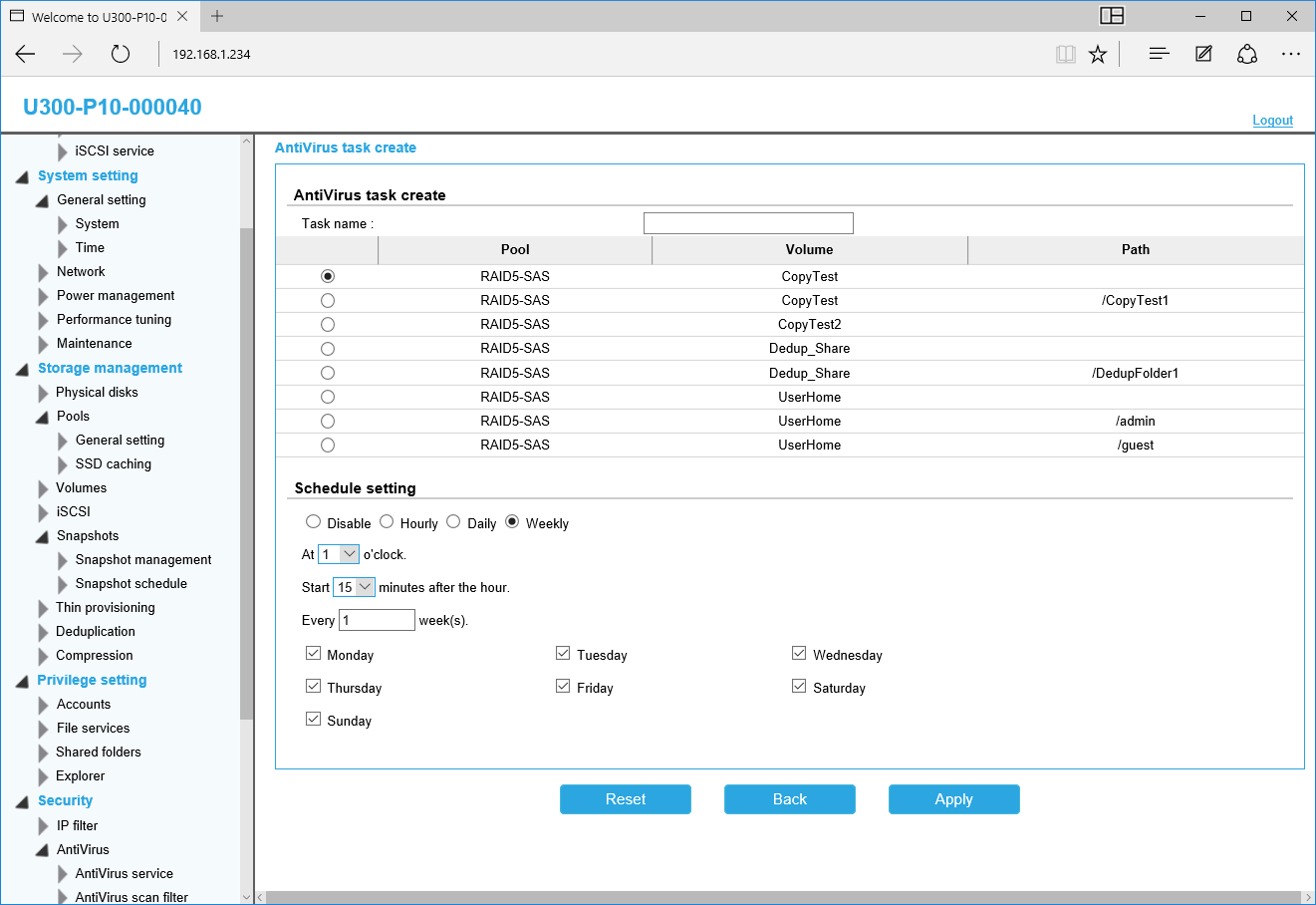
The price includes a three-year subscription to McAfee's on-appliance virus scanning service
Management choices
We swiftly deployed the array in the lab using its web console which looks a lot smarter that previous versions and is much easier to use. For multiple appliances, there's Qsan's QCentral utility which provides a central management console for them all.
For testing, we fitted four 4TB WD Enterprise SAS hard disks and created a single RAID5 storage pool. We could also slot SATA drives straight in as the new TrioNAS LX arrays don't require Qsan's optional MUX interposer boards.
Within our storage pool, we created ZFS file systems for our NAS shares or volumes for IP SAN targets and in both cases, we could set thin provisioning, deduplication and compression as required. Shared folders are created with the file system and for each one, we could enable CIFS, NFS, AFP and FTP access.
IP SANs are easy to create and Qsan provides plenty of access controls. Along with CHAP authentication, we could choose the physical data ports our LUNs would be visible on.
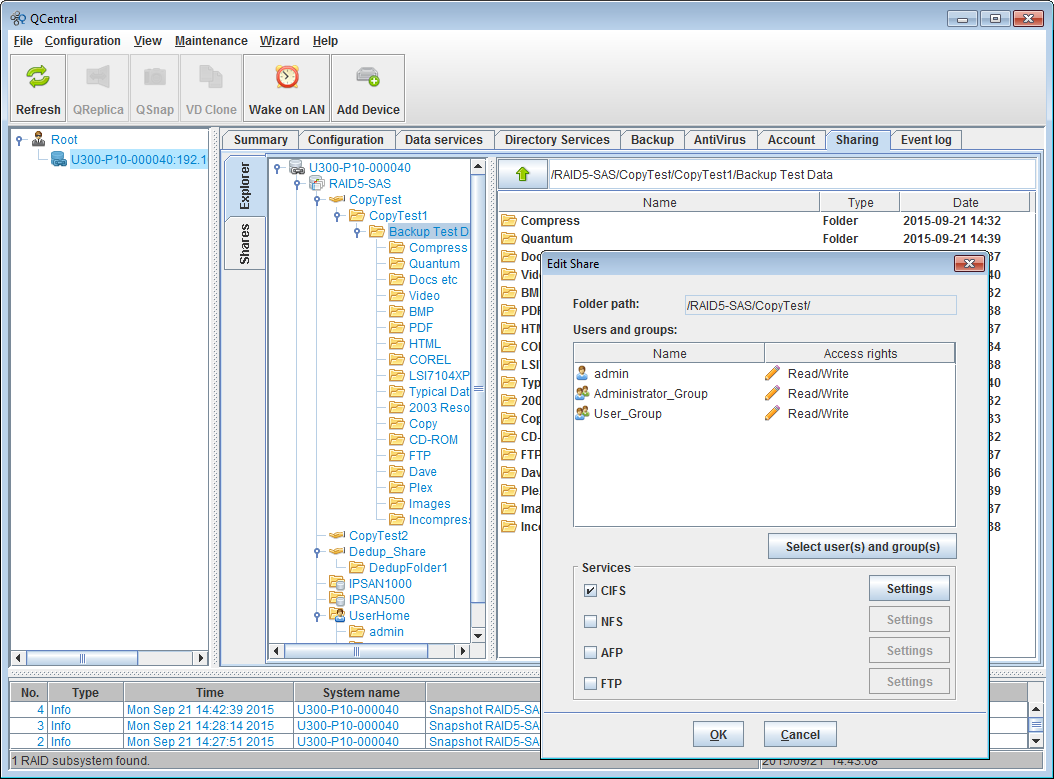
User access security is excellent and you can decide which network services will be made available
A good performer
For 10GbE performance testing, we hooked up an HP ProLiant DL380 Gen9 rack server loaded with Windows Server 2012 R2 and fitted with an Emulex dual-port 10GbE card. With a NAS share mapped to the server, we watched Iometer report impressive raw sequential read and writes rates of 9.1Gbits/sec and 7.7Gbits/sec.
We upped the pressure by linking another Xeon E5-2600 v3 server to the second 10GbE port and mapped a share from the same storage pool. With Iometer running on both shares, we recorded cumulative read and write speeds of 17.4Gbits/sec and 14.7Gbits/sec.
IP SAN performance is nothing to sniff at either as running Iometer on a 500GB target mapped to our HP server saw read and write rates of 9.2Gbits/sec and 7Gbits/sec. We also created a dual 10GbE MPIO link to the same target and watched read and writes speeds ramp up to 16.6Gbits/sec and 11.7Gbits/sec.
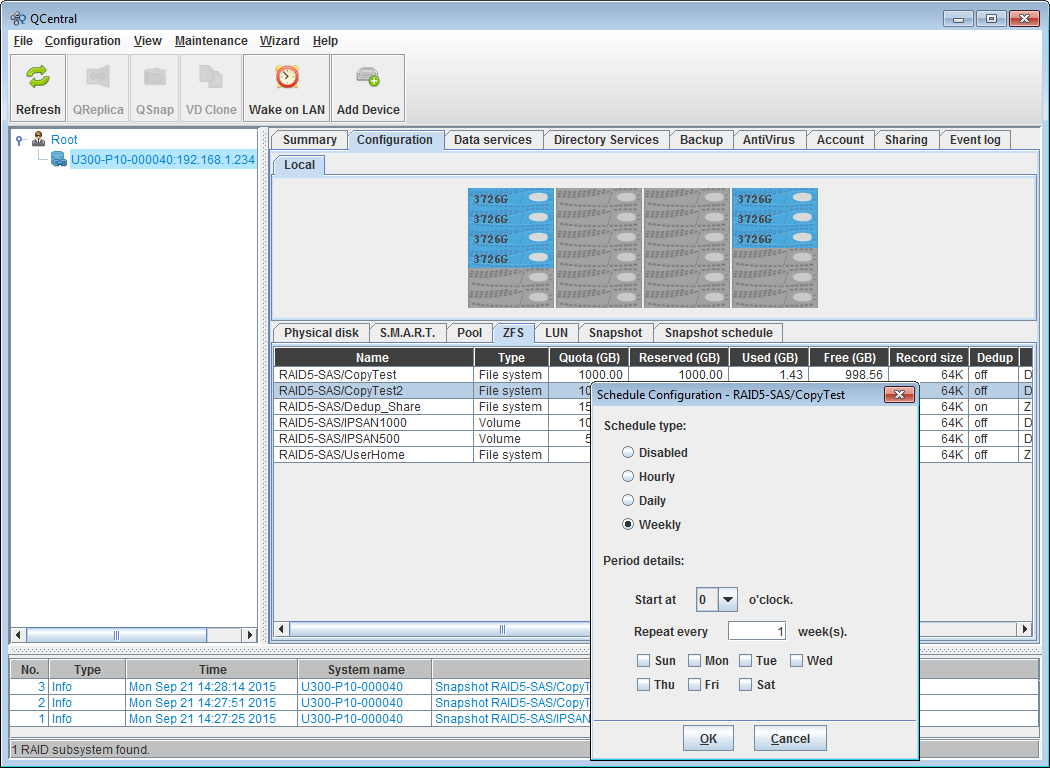
ZFS snapshots provide lightning-quick recovery and can be scheduled to run regularly
Dedup and snapshots
From our previous experiences using our own data deduplication test suite, ZFS deduplication isn't the most efficient. With a share mapped to Arcserve r16 as a backup destination, we applied measureable changes to a 4GB data set over a simulated one month backup period and saw a reduction ratio of only 3.2:1 - Arcserve's integral deduplication delivered over 8:1 in the same test.
As snapshots employ the ZFS copy-on-write feature, there's no limit on the number you can create. We took on-demand snapshots of selected file systems and volumes and also created a range of schedules for hourly and daily snapshots.
Rollback is fast as we deleted 22GB of data from a NAS share and used the last snapshot to restore everything in under 5 seconds. We didn't even have to un-map and remap the share. As if that wasn't enough, snapshots can be cloned and mounted as new network resources.
Conclusions
You won't find better value than Qsan's TrioNAS LX arrays. The only downside is the lack of controller or expansion port redundancy making it less appealing for mission-critical workloads. That said, the U300-P20-C424 delivers impressive capacity, expansion potential and performance. At this price, it just can't be beat.
Verdict
Big on capacity and performance, the TrioNAS LX is ideally suited to SMBs that want lots of network storage at a very affordable price
Chassis: 4U rack
CPU: 2.4GHz Core i3-4330TE dual-core
Memory: 16GB DDR3 (max 32GB)
Storage: 24 x 6Gbps SAS/SATA hot-swap drive bays
Array support: RAID0, 1, 5, 6, 10, 50, 60, JBOD
Power: 2 x 550W hot-plug power supplies
Network: 7 x Gigabit Ethernet, 2 x 10GbE SFP+
Expansion: 1 x 6Gbps SAS port
Management: Web browser, QCentral
Warranty: 3 years RTB
Get the ITPro daily newsletter
Sign up today and you will receive a free copy of our Future Focus 2025 report - the leading guidance on AI, cybersecurity and other IT challenges as per 700+ senior executives
Dave is an IT consultant and freelance journalist specialising in hands-on reviews of computer networking products covering all market sectors from small businesses to enterprises. Founder of Binary Testing Ltd – the UK’s premier independent network testing laboratory - Dave has over 45 years of experience in the IT industry.
Dave has produced many thousands of in-depth business networking product reviews from his lab which have been reproduced globally. Writing for ITPro and its sister title, PC Pro, he covers all areas of business IT infrastructure, including servers, storage, network security, data protection, cloud, infrastructure and services.
-
 Nvidia braces for a $5.5 billion hit as tariffs reach the semiconductor industry
Nvidia braces for a $5.5 billion hit as tariffs reach the semiconductor industryNews The chipmaker says its H20 chips need a special license as its share price plummets
By Bobby Hellard Published
-
 Business leaders are having a crisis of confidence over data literacy
Business leaders are having a crisis of confidence over data literacyNews A Salesforce survey reveals business leaders don't trust their data, or their ability to make the most of it
By Emma Woollacott Published
-
 MITRE CVE program handed last minute reprieve amid funding lapse concerns
MITRE CVE program handed last minute reprieve amid funding lapse concernsNews The MITRE Corporation's Common Vulnerabilities and Exposures (CVEs) database has been handed a last minute reprieve amid concerns over funding.
By Rory Bathgate Last updated